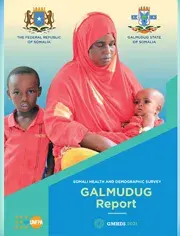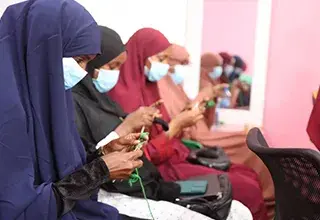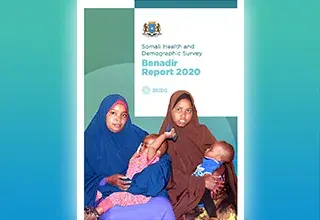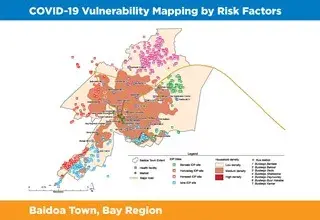The Galmudug Health and Demographic Survey (GMHDS) is a representative household survey that provides reliable data on health, nutrition and demographic characteristics. The survey was implemented by Somali National Bureau of Statistics (SNBS) and the Ministry of Health and Human Services (MoH) of the Federal Government of Somalia in partnership with the Ministry of Health and Human Services (MoH) and Ministry of Planning, Economic Development and International Cooperation (MoPEDIC) of Galmudug State of Somalia.
The survey marks the first time that such data has been produced in the history of the State which targeted women aged 15-49 and the children under the age of five years from randomly selected households across the State.
The main objective of GMHDS was to provide evidence on the health and demographic characteristics of the Galmudug population that will guide decision-makers in the formulation of effective policies for development of programmes. The data is critical for making informed policy decisions and for planning, monitoring, and evaluation of programmes related to health in general, and reproductive health in particular. The Galmudug State of Somalia is now able to monitor its respective sectors in the Development Plan as well as the health sector through the findings of this survey.
The survey findings will also offer an indication of social behaviour in our communities and encourage our people to adopt positive behavioural changes to improve their lives. The findings show just above half (57 percent) of Galmudug population is below 15 years of age. We are pleased to report that 78 percent of households get their drinking water from an improved water sources, 49 percent use improved facilities, and 29 percent of the population with access to electricity. The results indicate that total fertility rate (TFR) for Galmudug is quite high at 7.3.
However, 30 percent of Galmudug women deliver safely in a health facility. The GMHDS results further highlight areas that need urgent intervention—to improve the lives of children, we know that only 3.5 percent of births have been registered, and only 9 percent of children aged 11-23 months have been fully vaccinated against common vaccine-preventable childhood diseases. According to the three anthropometric indices of nutritional status of children, 27 percent of children under-five are stunted, 11 percent are wasted and 12 percent are underweight.





